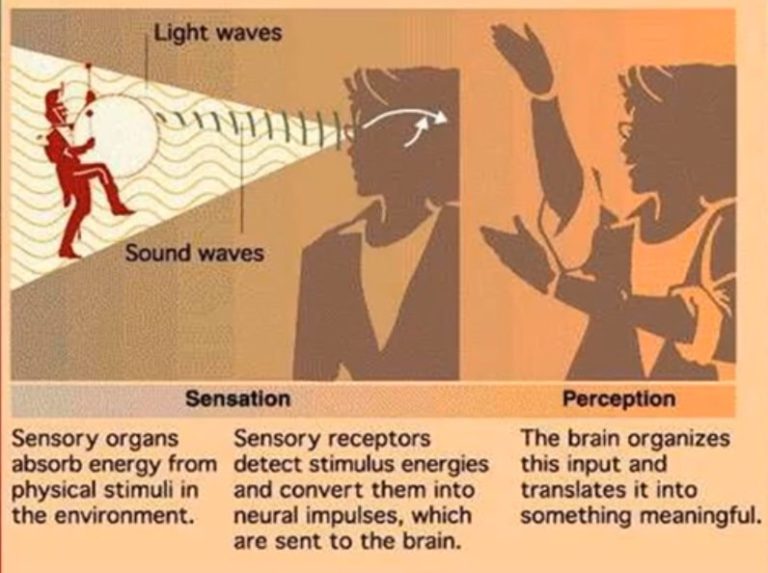

We are also capable of hearing the ticking of a watch in a quiet environment from 20 feet away. For example, the human eye is capable of detecting candlelight from 30 miles away in the dark. Through these and other studies, we have been able to gain an understanding of just how remarkable our senses are.

Additionally, indicating that a sound was heard when one wasn’t played is called a false alarm, and correctly identifying when a sound wasn’t played is a correct rejection. Correctly indicating that a sound was heard is called a hit failing to do so is called a miss. Some method of limits tests use descending trials, such as making a light grow dimmer until a person can no longer see it. In the example of louder tones, the method of limits test is using ascending trials. During one type of hearing test, for example, a person listens to increasingly louder tones (starting from silence). This type of test is called the method of limits, and it is an effort to determine the point, or threshold, at which a person begins to hear a stimulus (see Additional Resources for a video demonstration). This process involves presenting stimuli of varying intensities to a research participant in order to determine the level at which he or she can reliably detect stimulation in a given sense. The way we measure absolute thresholds is by using a method called signal detection. This absolute threshold explains why you don’t smell the perfume someone is wearing in a classroom unless they are somewhat close to you. Because absolute threshold changes throughout the day and based on what other stimuli you have recently experienced, researchers define absolute threshold as the minimum about of stimulation needed to detect a stimulus 50% of the time. Each sense organ-our eyes or tongue, for instance-requires a minimal amount of stimulation in order to detect a stimulus. The first of these influences is our ability to detect an external stimulus. Regardless of whether we are talking about sight or taste or any of the individual senses, there are a number of basic principles that influence the way our sense organs work. It is during this process that you are able to identify a gas leak in your home or a song that reminds you of a specific afternoon spent with friends. This psychological process-making sense of the stimuli-is called perception. After our brain receives the electrical signals, we make sense of all this stimulation and begin to appreciate the complex world around us. Physical energy such as light or a sound wave is converted into a form of energy the brain can understand: electrical stimulation. During sensation, our sense organs are engaging in transduction, the conversion of one form of energy into another. Sensation happens when you eat noodles or feel the wind on your face or hear a car horn honking in the distance. The physical process during which our sensory organs-those involved with hearing and taste, for example-respond to external stimuli is called sensation. It is probably best to start with one very important distinction that can often be confusing: the difference between sensation and perception. īefore discussing each of our extraordinary senses individually, it is necessary to cover some basic concepts that apply to all of them. Our senses combine to create our perceptions of the world. This description of a single memory highlights the way a person’s senses are so important to our experience of the world around us. All around me I could smell the salt from the sea and the scent of wet, fallen leaves." Below me, I could see a pod of sea lions swimming in the deep blue water. I grabbed the cold metal railing near the edge and looked out at the sea. After passing through a vibrantly colored, pleasantly scented, temperate rainforest, I arrived at a cliff overlooking the Pacific Ocean. "Once I was hiking at Cape Lookout State Park in Tillamook, Oregon.

Explain the consequences of multimodal perception.Apply knowledge of sensation and perception to real world examples.Outline the anatomy of the sense organs and their projections to the nervous system.Describe the function of each of our senses.Explain the basic principles of sensation and perception.Differentiate the processes of sensation and perception.


 0 kommentar(er)
0 kommentar(er)
